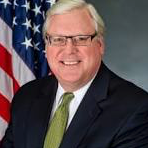
It’s a crucial step in the process. Most importantly, it gives the public a chance to see where state leaders want to take New York.
Remember that Governor Hochul kicked off this budget season by proposing an Executive Budget totaling approximately $233 billion which, if enacted, would be the largest-ever state budget and simply continue the out-of-control fiscal practices that will forever define this era in state government under one-party, all-Democrat leadership.
Consequently, our Senate Republican Conference last week sent a letter to the Democratic Majority Leader of the Senate to at least give voice to the priorities and policies we believe should serve as the foundation of any new budget.
In part, we wrote, “The lack of affordability in the Empire State has clearly reached crisis proportions, with thousands of New Yorkers fleeing to more affordable states. The high taxes in our State have exacerbated this crisis, while also directly contributing to our poor business climate. The Senate Republican Conference is committed to reversing these dangerous trends…We are also committed to common sense reforms to address New York’s criminal justice crisis, as well as the growing illegal immigrant fiasco that appears to be spinning completely out of control. In addition, we continue our fight for smart, sustainable and workable energy policies, a stronger mental health system, and a public education system that will ensure a brighter, better future for millions of children throughout New York State.”
Our agenda builds on the legislative agenda we released at the start of this new year, “A New Hope for NY,” that we believe helps point the way to a better, stronger, and safer state for more New Yorkers. Among many calls to action, we think the next state fiscal plan must:
reject the additional $2.4 billion in funding Governor Hochul has proposed for migrants — $4.3 billion over two years; reject the Governor’s plan to alter the School Aid formula to eliminate the “save harmless” clause for Foundation Aid – a misguided change that would result in direct funding cuts for 337 largely rural and suburban school districts statewide, including many across the Southern Tier and Finger Lakes; reject the Governor’s plan to permit the closure of five more state prisons, which would undermine public health and safety, destabilize local economies, and lead to more dangerous working conditions for correctional officers; reject the Governor’s proposed cuts for New York’s critical transportation infrastructure, especially a significant cut for local roads and bridges through the Consolidated Local Street and Highway Improvement Program (CHIPS) program; permanently cap state spending by reinstating a two-percent spending cap, the lifting of which has cost New Yorkers approximately $35 billion over the last three years; eliminate costly unfunded mandates that drive up local property taxes, including blocking the all-electric school bus mandate on local school districts; require full accountability from the state’s Climate Action Council, especially to require a full and transparent cost-benefit analysis of any and every mandated action. You can read our full letter on my Senate website, omara.nysenate.gov.
New York State faces an affordability crisis. We face a border crisis. Law and order are in free fall. We must enact an across-the-board agenda to cut taxes, control spending, address affordability, and start truly rebuilding stronger and safer communities.”
Senator Tom O'Mara represents New York's 58th District which covers all of Chemung, Schuyler, Seneca, Steuben, Tioga and Yates counties, and a portion of Allegany County.
- Read more...
- 0 comments
- 90 views


